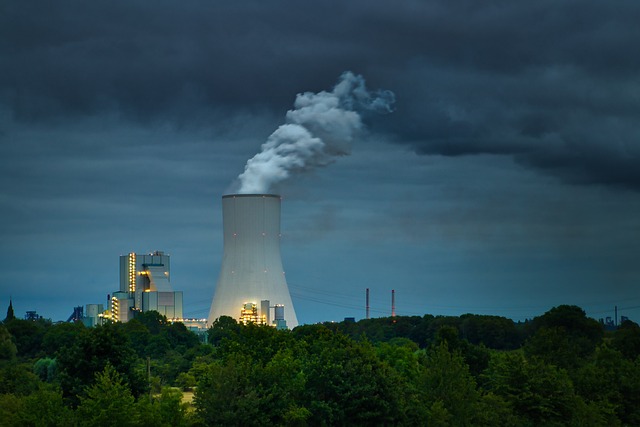
- The goal was to cut the amount of energy used per GDP unit by 13.5% by 2025 as opposed to 2020. However, energy intensity has only dropped by 7.3% by the end of 2023.
- China may have already accomplished the aim of peaking emissions “before 2030,” and the goal of increasing wind and solar capacity to 1,200 gigawatts by 2030 has also been fulfilled six years early, thanks to record levels of new installations.
- The strategy intends to cut energy usage by 2.5% and CO2 emissions by 3.9% by the end of 2024.It also aims to raise non-fossil energy consumption by 18.9% in 2024 and 20% in 2025.
On May 29, the State Council of China announced a detailed action plan for energy saving and carbon reduction for 2024-2025, aiming to enhance efforts toward achieving the energy efficiency targets set during China’s 14th Five-Year Plan (FYP).
Also Read:
- Nuclear in Indonesia Needs Renewable Energy Law To Be Passed
- Indonesia’s Trans Java Toll Could Boost Clean Energy Mix
Carbon Cut Goal Plans
The goal is to reduce energy consumption per unit of GDP by 13.5% by 2025 compared to 2020. However, energy intensity has only decreased by 7.3% by the end of 2023. The plan outlines ambitious targets for reducing fossil fuel consumption, increasing the use of renewable energy sources, and implementing significant energy-saving and carbon-reduction initiatives in critical industries such as transportation and steel.
If China makes more ambitious commitments to the United Nations early next year, its carbon dioxide emissions, which contribute to climate change, could decrease by a third by 2035, aligning with the goals of the Paris Agreement, according to an environmental think tank on Thursday. Nations are required to submit stronger “nationally determined contributions” (NDCs) to the United Nations by February to establish targets for 2035 as part of their commitments under the Paris Agreement.
Pledges from China, the world’s largest producer of greenhouse gases, will face intense scrutiny. As China is on track to meet its 2030 climate targets with relative ease, the Helsinki-based Centre for Research on Energy and Clean Air (CREA) believes the country can leverage its renewable energy strengths and implement policies to achieve a reduction in emissions of at least 30% by 2035.

CREA’s China Policy Expert
According to CREA’s China policy expert, Belinda Schape, total CO2 levels may be in “structural decline” following this year’s decrease, with encouraging signals indicating that climate policy is being prioritized once more. However, despite these positive trends, there is a risk that Chinese policymakers may be underestimating China’s climate targets for 2035 due to current policy inertia, the researcher noted. China has not provided specific details regarding its intentions for its NDC. Li Chuangjun, the country’s leading renewable energy official, informed reporters in August that they are “working hard” to establish objectives for 2035.
According to Li, China’s long-term climate targets are established, and the path to achieving net-zero emissions will be determined solely by China, with “no influence from others.” The Climate Action Tracker, an independent project evaluating how nations meet the Paris Agreement’s goal of limiting temperature rises to 1.5 degrees Celsius or below, has described China’s most recent NDC submission in 2021 as “highly insufficient.”
Also Read:
- Is Methane Potential Cause Greenhouse Effect after Carbon?
- Oppenheimer’s Movie! Does Nuclear Look Like a Weapon or Energy?
The United Nations classifies China as a developing country, meaning it is not required to make absolute reductions in emissions. In its last NDC submission in 2022, China stated that it had “made every effort” to promote climate action. The country may have already achieved its goal of peaking emissions “before 2030.” Furthermore, it has reached its target of increasing wind and solar capacity to 1,200 gigawatts by 2030, six years ahead of schedule, thanks to record levels of new installations.
CREA reported that China is capable of achieving a wind and solar capacity target of 4,500 gigawatts by 2035 while also reducing overall power sector emissions by at least 30%. Additionally, it could reduce emissions from steel and cement production by 45% and 20%, respectively. CREA also noted that ambitious targets to reduce other greenhouse gases, such as methane, are attainable.

Key Goals
The strategy aims to reduce energy consumption by 2.5% and CO2 emissions by 3.9% by the end of 2024. Additionally, it targets a rise in non-fossil energy consumption of 18.9% in 2024 and 20% in 2025, through measures that promote renewable energy sources and enhance energy efficiency across various sectors.
Over the next two years, the strategy anticipates a reduction of approximately 50 million tons of standard coal and a decrease in CO2 emissions of around 130 million tons. Furthermore, it aims to reduce the energy intensity (the amount of energy consumed per unit of economic output) of large industrial enterprises by 3.5% by 2024. The action plan comprises 27 initiatives across ten categories, targeting a conservation of around 50 million tons of standard coal annually.
Over the next two years, approximately 260 million tons of carbon dioxide, representing 2% of China’s total emissions from the previous year, will be reduced in critical locations.
#zonaEBT #Sebarterbarukan EBTHeroes
Editor: Savira Oktavia
References:
[1] China could cut CO2 by a third by 2035 with new UN targets, think tank says
[2] China Issues Action Plan for Energy Saving and Carbon Reduction (2024-2025)



Comment closed